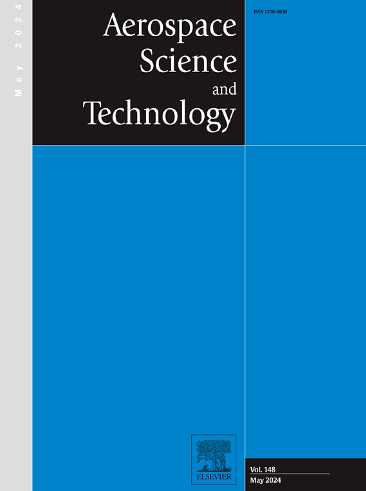Nonlinear bending of sandwich plates with deep learning inverse-designed 3D auxetic lattice core
IF 5
1区 工程技术
Q1 ENGINEERING, AEROSPACE
引用次数: 0
Abstract
Based on generative deep learning (DL), this paper innovatively proposes a sandwich panel with inverse-designed 3D auxetic cores. Furthermore, we demonstrate that the bending performance of such data-driven sandwich structure is superior to existing design which consists of 3D lattice core evolved from the traditional 2D re-entrant honeycomb design. The deflection related to proposed DL-based sandwich plate is nearly one-third of that in existing studies. Through metal additive manufacturing techniques and finite element (FE) modeling, flexural behaviors of the inverse-designed 3D truss unit cell with different geometric factor is further examined. With different functionally graded core configurations and uniform distributed as comparison group, parametric studies are conducted to investigate the effect of various dimensional parameters, thermal environments and boundary conditions on the nonlinear bending behaviors and effective Poisson's ratio of sandwich plates subjected to a uniform pressure. This work provides a reference for the study of mechanical properties of novel auxetic sandwich structures and has potential guiding implications for accelerating the design process and performance optimization of sandwich plates.
采用深度学习逆向设计三维辅助晶格核心的夹层板非线性弯曲
基于生成式深度学习(DL),创新性地提出了一种具有反设计三维辅助芯的夹层板。此外,我们还证明了这种数据驱动的夹层结构的弯曲性能优于现有的由传统的二维再入蜂窝设计演变而来的三维晶格核心设计。本文提出的基于dl的夹层板的挠度是现有研究的近三分之一。通过金属增材制造技术和有限元建模,进一步研究了不同几何因子下反设计的三维桁架单元格的抗弯性能。以不同功能梯度芯结构和均匀分布芯结构为对照组,进行了参数化研究,探讨了不同尺寸参数、热环境和边界条件对均压夹层板非线性弯曲行为和有效泊松比的影响。本研究为新型增塑型夹层结构的力学性能研究提供了参考,对加快夹层板的设计进程和性能优化具有潜在的指导意义。
本文章由计算机程序翻译,如有差异,请以英文原文为准。
求助全文
约1分钟内获得全文
求助全文
来源期刊

Aerospace Science and Technology
工程技术-工程:宇航
CiteScore
10.30
自引率
28.60%
发文量
654
审稿时长
54 days
期刊介绍:
Aerospace Science and Technology publishes articles of outstanding scientific quality. Each article is reviewed by two referees. The journal welcomes papers from a wide range of countries. This journal publishes original papers, review articles and short communications related to all fields of aerospace research, fundamental and applied, potential applications of which are clearly related to:
• The design and the manufacture of aircraft, helicopters, missiles, launchers and satellites
• The control of their environment
• The study of various systems they are involved in, as supports or as targets.
Authors are invited to submit papers on new advances in the following topics to aerospace applications:
• Fluid dynamics
• Energetics and propulsion
• Materials and structures
• Flight mechanics
• Navigation, guidance and control
• Acoustics
• Optics
• Electromagnetism and radar
• Signal and image processing
• Information processing
• Data fusion
• Decision aid
• Human behaviour
• Robotics and intelligent systems
• Complex system engineering.
Etc.
 求助内容:
求助内容: 应助结果提醒方式:
应助结果提醒方式:


